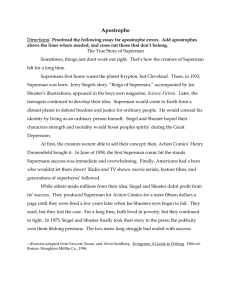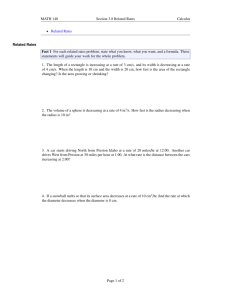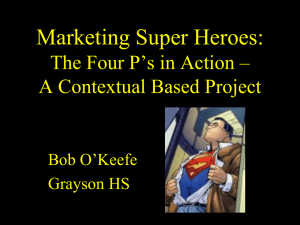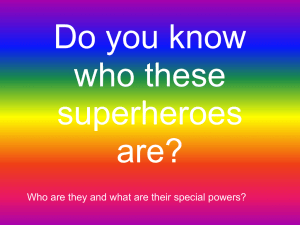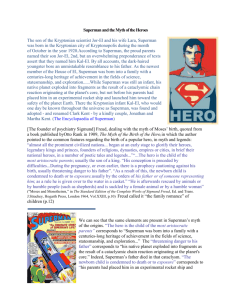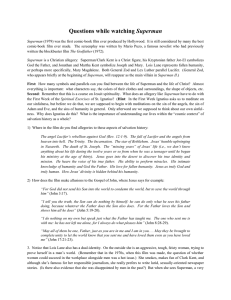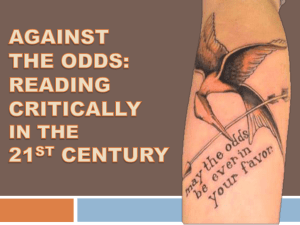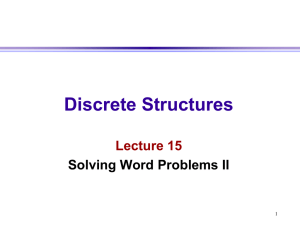ridingsupermanscape - National Human Services Assembly
advertisement
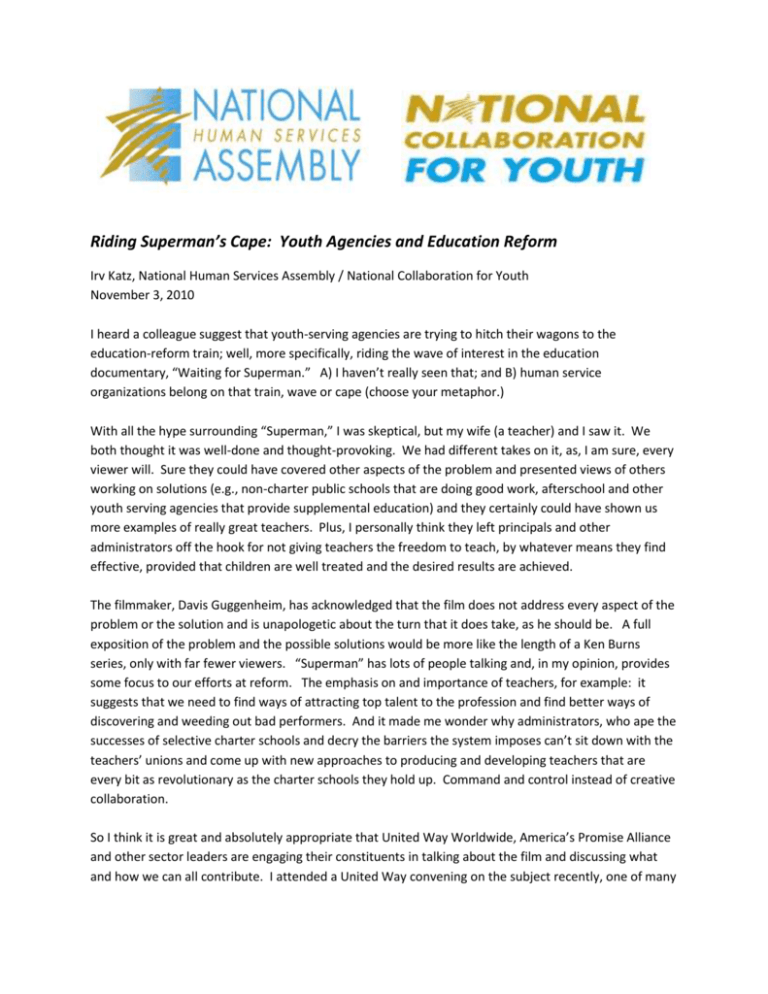
Riding Superman’s Cape: Youth Agencies and Education Reform Irv Katz, National Human Services Assembly / National Collaboration for Youth November 3, 2010 I heard a colleague suggest that youth-serving agencies are trying to hitch their wagons to the education-reform train; well, more specifically, riding the wave of interest in the education documentary, “Waiting for Superman.” A) I haven’t really seen that; and B) human service organizations belong on that train, wave or cape (choose your metaphor.) With all the hype surrounding “Superman,” I was skeptical, but my wife (a teacher) and I saw it. We both thought it was well-done and thought-provoking. We had different takes on it, as, I am sure, every viewer will. Sure they could have covered other aspects of the problem and presented views of others working on solutions (e.g., non-charter public schools that are doing good work, afterschool and other youth serving agencies that provide supplemental education) and they certainly could have shown us more examples of really great teachers. Plus, I personally think they left principals and other administrators off the hook for not giving teachers the freedom to teach, by whatever means they find effective, provided that children are well treated and the desired results are achieved. The filmmaker, Davis Guggenheim, has acknowledged that the film does not address every aspect of the problem or the solution and is unapologetic about the turn that it does take, as he should be. A full exposition of the problem and the possible solutions would be more like the length of a Ken Burns series, only with far fewer viewers. “Superman” has lots of people talking and, in my opinion, provides some focus to our efforts at reform. The emphasis on and importance of teachers, for example: it suggests that we need to find ways of attracting top talent to the profession and find better ways of discovering and weeding out bad performers. And it made me wonder why administrators, who ape the successes of selective charter schools and decry the barriers the system imposes can’t sit down with the teachers’ unions and come up with new approaches to producing and developing teachers that are every bit as revolutionary as the charter schools they hold up. Command and control instead of creative collaboration. So I think it is great and absolutely appropriate that United Way Worldwide, America’s Promise Alliance and other sector leaders are engaging their constituents in talking about the film and discussing what and how we can all contribute. I attended a United Way convening on the subject recently, one of many they are hosting around the country. I was particularly gratified that there were others present who believe strongly, as I do, that the issue is about more than schools—it is about educating and, dare I say, developing, children and youth. I buy the argument that we do not want to dilute school reform—much is needed and it is long overdue. From appalling school facilities to broken bureaucracies—these things need to be fixed. But if it is educating children that we are about, and most would agree that we are, what happens in the school house during the school day (even if you add in homework) is not the only set of ingredients. It is breathtaking to me that we keep layering standards and expectations on schools and expect better outcomes without addressing the others aspects of children’s lives that affect learning. Yes, genuinely and aggressively engaging parents in fostering learning a critical element. But the omission that really takes my breath away is the resource that the government and community institutions invest billions of dollars in and that influence the lives of the vast majority of our children—early child development and child and youth development programs. Just among the members of the National Collaboration for Youth, which includes many of the major youth-service providers but by no means all of them, we estimate over a hundred thousand local sites. And many children spend more time in these programs than they spend in school. I know I am preaching to the choir, given the constituency of the National Assembly and National Collaboration for Youth, but these agencies are educating children. Many of them work with schools, some even on school grounds, but educators and society generally tend to view their services variously as child care or just “good,” if marginal, to the mission of education. One very positive sign of progress is the recognition that “extended learning” or “community” schools have begun to receive in recent years, particularly since Secretary of Education, Arne Duncan, found them so valuable in his efforts to revitalize schools in Chicago. But even as schools with out-stationed services of various community agencies become more common (and the practice is still very far from universal), these services are viewed as “other activities” not education. They are marginalized when, in fact, they are an underleveraged resource. What do I mean by under-leveraged? I mean that these agencies, many of which I have had the privilege of getting to know through my work at the community and national levels, aspire to the same things for children as do schools, parents and everyone else and we are not taking full advantage of the tremendous asset they represent. More than amenities available to children on a relatively random basis or “programs that are just a part of growing up”, the providers of these programs should figure prominently at the tables where new approaches to educating children are being developed and not as “representatives of the community” but as strategic partners with whom educators share responsibility for the big goal—ensuring that every child is ready for college, work and life (the driving objective of the Ready By 21 Partnership, which includes major players in youth development, business, philanthropy, education and more). Whether it is “Waiting for Superman” or local debates about education, it is so easy to: 1) slide back into thinking that this is just about fixing schools; and 2) have reform efforts get weighted down by trying to address all the specific challenges that schools face. People in the human service and youth development communities, and others who might share this thinking, ought not to be riding Superman’s cape, they need to be an integral part of the “Superman” that everyone’s waiting for. The Superman Geoffrey Canada was waiting for as child was one who would rescue him from the challenges that surrounded him and take him to safety and opportunity. Children need rescuing, education needs rescuing and all the people who share responsibility for educating children need rescuing, but only by a figurative Superman of our own making—a collective resolve and set of strategies and partnerships to help every child be ready for college work and life. To start with, we don’t just need fixes for schools (though surely that is a part of it), we need clear commonly held aspirations for our children and once these are established we need strategies that leverage all available or conceivable assets—particularly those involved in child and youth development, including education, youth development and more—put against those strategies with great intentionality: from goal(s) to logic model to leveraging specific assets to achieve desired and achievable outcomes. As a community of child, youth and human development organizations, we could be champions for awakening awareness of a broader vision and greater opportunity for achieving success. One part of that is to demand that we be at the right tables—the tables where design, experimentation and execution take place; and in our collective advocacy work, we must be very clear and unified that it is not just about fixing schools or fixing a set of problems—it is about achieving the best positive outcomes for children and youth and doing so by using all the assets at our disposal or creating new ones when necessary. The adage goes: if all you have is a hammer, everything looks like a nail, when we actually have a full toolbox. If all of our metrics are all test scores, then teaching to the test is the tool we’ll choose, when there are many possible indicators of readiness for college work and life. ( In fact, the Research Group of the National Collaboration for Youth has begun discussing coming up with such indicators.) If we are smart about this, we could be the Superman we’re waiting for. National Human Services Assembly: www.nationalassembly.org National Collaboration for Youth: www.collab4youth.org

